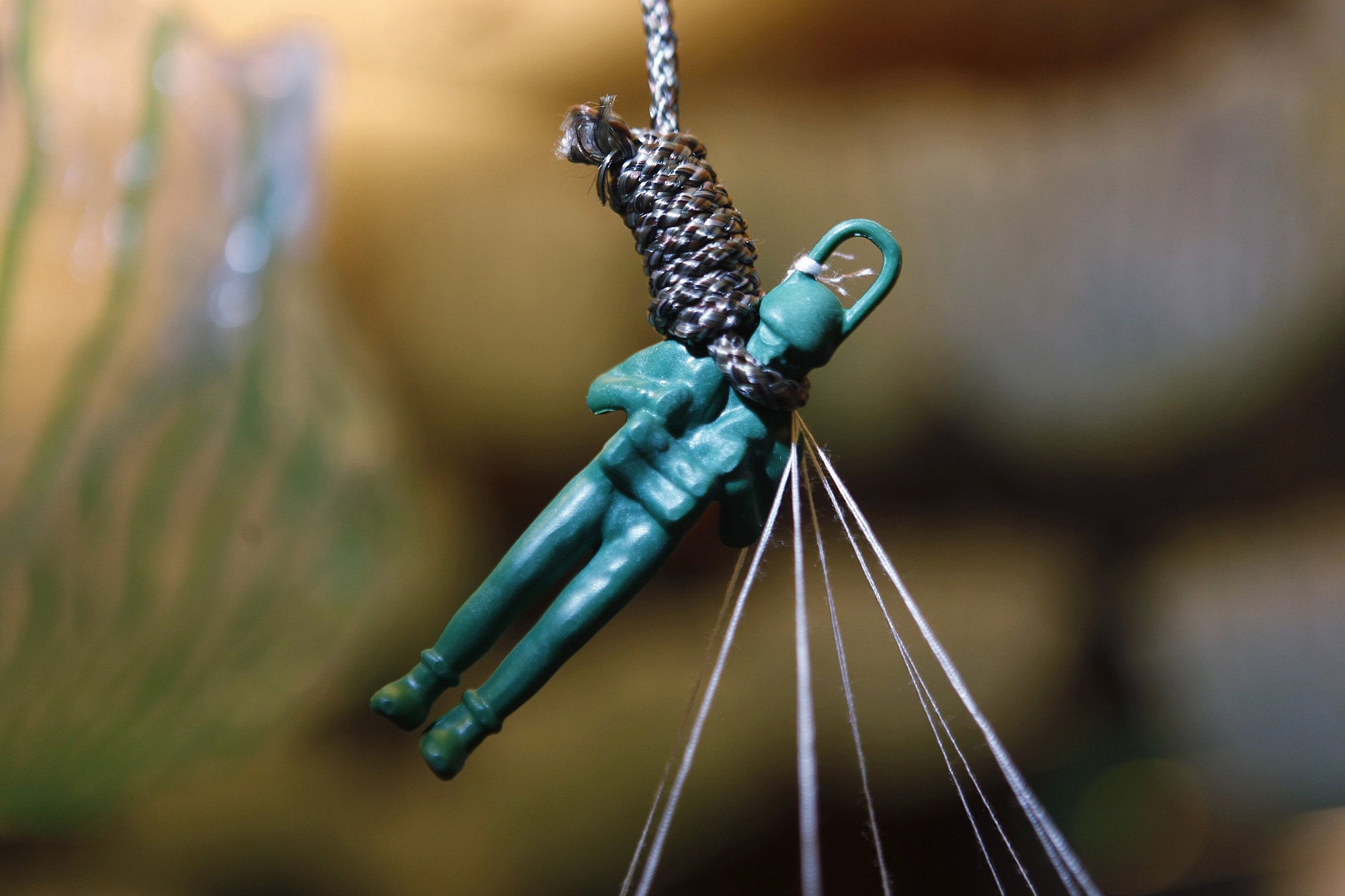SAN JOSE, Calif — These are no ordinary Joes.
At first glance, the G.I. Joe action figures who are the subjects of a stark photo exhibit on display at the Dr. Martin Luther King Jr. Library look disturbingly real. And that’s precisely the point.
Mark Pinto hopes the iconic toy dolls bring to life the often unseen challenges that America’s veterans face — including those returning from the post-9/11 wars. The titles of the eight-photo “Joes Come Home” series say it all. Homeless Joe. Drunk Joe. PTSD Joe. There’s even Suicide Joe.
“We send people into war as if they are toy soldiers, then we don’t care for them when they come back,” said Pinto, 58, a Gulf War veteran who was a Marine helicopter pilot. “There’s something about the dolls that pull you in closer. It’s discomforting. People don’t want to look at the homeless. They don’t want to think about the suicides. They want to ignore all of this.”
If the G.I. Joes are too subtle, the symbolism of the second part of Pinto’s exhibit — “22 Joes Every Day” — is impossible to miss. He spent a recent week hanging 22 smaller toy soldiers each day from the library’s fourth-floor ceiling. The plastic men, each dangling from a hangman’s noose, are a searing visual of how many vets take their own lives every day.
Pinto’s social art is part of a program called “War Comes Home: Our Veterans, Our Communities,” which is a partnership of the San Jose Public Library, San Jose State University and Goodwill of Silicon Valley. The series also includes upcoming panel forums, dramatic readings as well as book club discussions of “What It Is Like To Go To War” by veteran Karl Marlantes.
The goal is to spark public conversation about how society can better support vets who are having a difficult time as they transition back into civilian life.
“What we’re finding is that the veteran community is ready and willing to talk about its concerns,” said Angie Miraflor, the library’s division manager of literacy and learning. “This is an important program because we have so many veterans here in San Jose, and we just don’t think there’s enough awareness yet of what they’re going through.”
A growing number of authors and artists who served in the military — and often did tours in Iraq and Afghanistan War zones — are trying to make sense of their experiences.
“There are a lot of vets now coming into the arts who are expressing the reality of what war really is,” Pinto said.
He served 20 years and retired as a major in 2002. He spent eight years as a Buddhist priest before enrolling at SJSU, where he recently graduated with a master’s degree in photography.
Pinto also has worked with other veterans through the San Francisco-based nonprofit Coming Home Project. Frustrated that the emotional toll of war often is overlooked, he began for searching for ways to bring attention to the plight of struggling vets. He settled on using G.I. Joes to illustrate their troubles.
Homeless Joe features a toy covered by a plastic trash bag, resting next to a chain-link fence. Suicide Joe has three grieving G.I. Joes in a cemetery. His latest photo is Joes Wait. A group of toys are situated along a wall, symbolizing the long wait times for VA benefits. Accompanying the portraits are the grim statistics that explain the pervasiveness of each issue.
“These are the same toys that I grew up playing with, romanticizing war as something heroic,” he said. “But I want to show what it’s like when they come back. I’ve worked with vets who have real problems. So while these G.I. Joes might not be me, they very much are people I know. In my mind, there’s a name for every one of these Joes.”
The other portion of his exhibit stems from something he learned during his own treatment for depression at the VA. At that time, 18 veterans a day were taking their lives at that time — a number that since has increased.
“I started thinking, ‘How do I bring that statistic alive?’ ” Pinto said. “I know several veterans who have committed suicide. Every veteran knows someone. But what does 22 a day really mean? I wanted to make that number real.”



